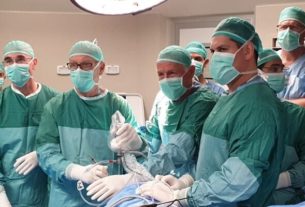An exciting first-time discovery by scientists from Israel and Spain has made the world’s research community thrilled.
What makes Dr. Shira Knafo from the Faculty of Health Sciences at Ben-Gurion University of the Negev, and her Spanish colleagues, Dr. Ildefonso Martínez De La Fuente, Dr. José I. López, and Dr. María Dolores Boyano of University of the Basque Country, so special is the fact that single-cell organisms like amoebas can develop memories and learn using classical conditioning methods. Just like Ivan Pavlov’s famous dogs’ experiment.
Russian physiologist and 1904 Nobel Prize laureate Pavlov was one of the first scientists to demonstrate the relationship between environmental stimuli and behavioral responses. He proved dogs can associate certain signals like the sound of a bell with a reward of food.
Dr. Shira Knafo and her colleagues were able prove that single cellular life forms, amoebas in this case, also have the ability for associative learning.
In a study twenty years ago, found that when amoebas are placed in an electric field with a negative charge on one side and a positive charge on the other, they will always move in the direction of the negative charge.
To show that amoebas can ignore their instincts and change their behavior, the researchers placed amoebas in an electrical field with food on the positive side and observed how they moved towards the food.
The researchers were surprised by the fact that some amoebas moved to the right side of the field in search of food also after they removed the food from the electric field. This was the first time single-celled organisms showed the ability to learn and remember.
“When we removed the food from the electric field, the majority of the amoebas went back to the negative side, while a small number went to the positive side in search of food,” Dr. Knafo explains. “This shows that some show the ability to learn and some don’t. We’re still trying to figure out what makes some ‘smarter’ than others.”
“We know that certain protein changes in the brains of both animals and humans play a part in the process of creating and remembering information,” She added, “Our hypothesis is that similar changes occur in amoebas.
“If we understand how memory works in amoebas, we can better understand learning and memory processes in other life forms in the future, we might even find a solution for neurodegenerative diseases such as Alzheimer’s,” she said.
By Ynet News





